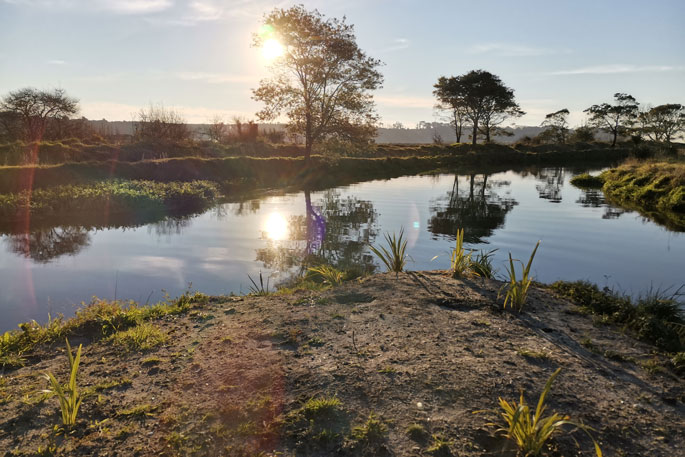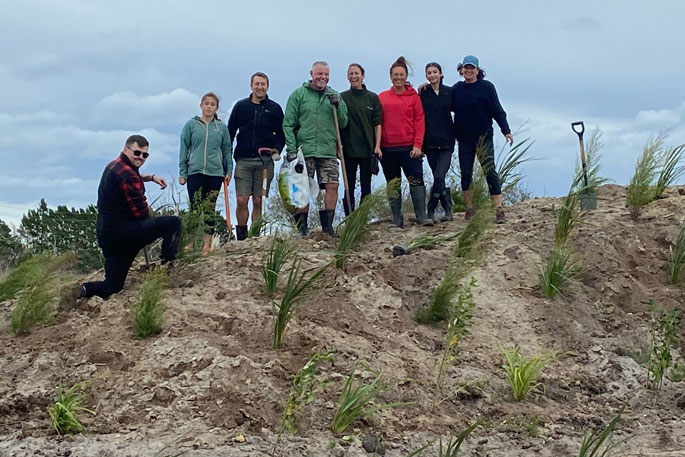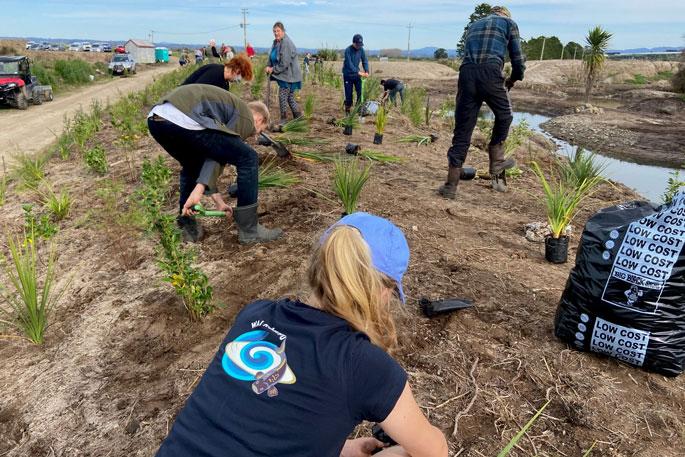BayTrust is committing $1 million worth of funding over the next three years to the effort to restore the badly degraded Te Waihī estuary that was once a main food bowl for the coastal Bay of Plenty.
Unimpeded farm development and intensification of land use over time has led to the estuary's gradual decline.
It's now considered one of the five most polluted estuaries in New Zealand.
Shellfish gathering is permanently banned because faecal coliform concentrations are 430 per cent higher than what's considered safe, and native plants, fish and birds are all struggling to survive.
An incorporated society called Wai Kōkopu was formed late last year to work with landowners, tangata whenua, environmental groups and the wider community to restore the ecological health of the catchment's three main rivers and streams - Kaikōkopu, Whārere and Pōngakawa – and ultimately, the Waihī estuary itself.
A key strategy is to encourage large-scale native retirement of riparian corridors, wetlands and steep erosion-prone land to mitigate sediment, phosphorus and E.coli. runoff into the receiving waterways.
 Te Waihī estuary is now the fifth most polluted in NZ.
Te Waihī estuary is now the fifth most polluted in NZ.
BayTrust's substantial grant will help Wai Kōkopu get the community actively involved in planting and restoration efforts including weed and pest control.
'We're also keen to establish a taonga plant nursery where we'll grow special coastal and estuarine plants,” explains Group Project Manager Alison Dewes.
'They will be native plants that are endangered and need special nurturing.”
Wai Kōkopu is hugely appreciative of the $1 million grant.
'It will create a step change in how we can resource and include the community in our programme of restoration work. We received $1.5m funding from MPI in February to work with farmers to promote land environment planning and management. This BayTrust funding will go towards the physical restoration work required to implement those plans which is going to help bring our community together.”
Wai Kōkopu's efforts will also complement the regional council and the Government's one billion trees programme and other funding sources that are available to help farmers retire vulnerable land near waterways.
'It's not cheap – it costs around $10,000 to $15,000 a hectare to retire land and put it into native plantings and do the necessary pest and weed control to maintain it,” Dewes explains.
 Volunteers help replant natives along Te Waihī estuary.
Volunteers help replant natives along Te Waihī estuary.
Te Waihī estuary catchment comprises 34,000ha in total and runs from the mountains just below the Rotorua's Lakes to the coast at Pukehina.
The catchment has around 80 dairy farms, 220 orchards, and 50 drystock properties, along with forestry, and rural communities.
Dewes says support for the project is high as people recognise that something must be done to protect the ecological and water quality.
Local farmers will donate the areas of land to be retired and funding is also being sought from other sources to help fulfil the project's long-term goals.
'An increasing number of landowners are contemplating taking advantage of the generous funding available to retire sensitive land as they begin to implement their land environmental plans. The win-win of this approach is that it also coincides with the requirement for farmers to have greenhouse gas budgets done and work out how they will sequester carbon for offsetting, if it is required in some cases.
"This is all working towards cumulative benefits for both farmers, their business performance, the replenishment of the whenua, and receiving wai, and the overall community desire for cleaner and healthier waterways.”
People who are keen to get involved in upcoming planting and restoration projects can sign up to become a member of Wai Kōkopu online at www.wai-kokopu.org.nz and follow the group's Facebook page for updates.
Plans are currently in place to replant over 100ha this year to kick the programme off and fence around 10,000m of riparian corridors that lead to the estuary.
'Another goal eventually is to provide more access for people into this beautiful area by creating bush walks and extending the cycleway that leads from Okere Falls into the upper Kaikōkopu river.”
 Te Waihī estuary.
Te Waihī estuary.



0 comments
Leave a Comment
You must be logged in to make a comment.